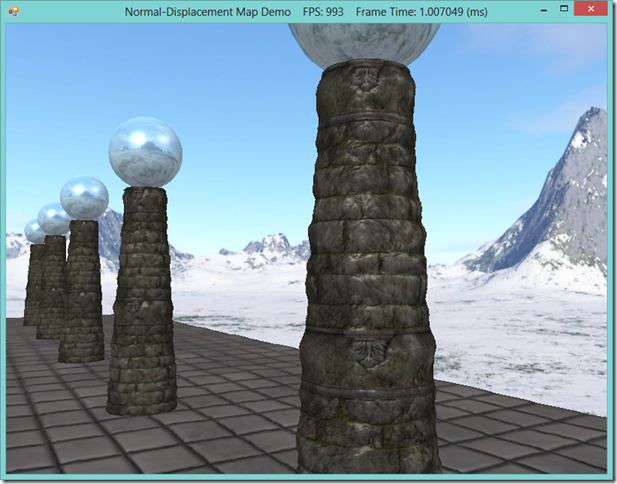A common task for strategy and other games with an outdoor setting is the rendering of the terrain for the level. Probably the most convenient way to model a terrain is to create a triangular grid, and then perturb the y-coordinates of the vertices to match the desired elevations. This elevation data can be determined by using a mathematical function, as we have done in our previous examples, or by sampling an array or texture known as a heightmap. Using a heightmap to describe the terrain elevations allows us more fine-grain control over the details of our terrain, and also allows us to define the terrain easily, either using a procedural method to create random heightmaps, or by creating an image in a paint program.
Because a terrain can be very large, we will want to optimize the rendering of it as much as possible. One easy way to save rendering cycles is to only draw the vertices of the terrain that can be seen by the player, using frustum culling techniques similar to those we have already covered. Another way is to render the mesh using a variable level of detail, by using the Hull and Domain shaders to render the terrain mesh with more polygons near the camera, and fewer in the distance, in a manner similar to that we used for our Displacement mapping effect. Combining the two techniques allows us to render a very large terrain, with a very high level of detail, at a high frame rate, although it does limit us to running on DirectX 11 compliant graphics cards.
We will also use a technique called texture splatting to render our terrain with multiple textures in a single rendering call. This technique involves using a separate texture, called a blend map, in addition to the diffuse textures that are applied to the mesh, in order to define which texture is applied to which portion of the mesh.
The code for this example was adapted from Chapter 19 of Frank Luna’s Introduction to 3D Game Programming with Direct3D 11.0 , with some additional inspirations from Chapter 4 of Carl Granberg’s Programming an RTS Game with Direct3D . The full source for this example can be downloaded from my GitHub repository, at https://github.com/ericrrichards/dx11.git, under the TerrainDemo project.


